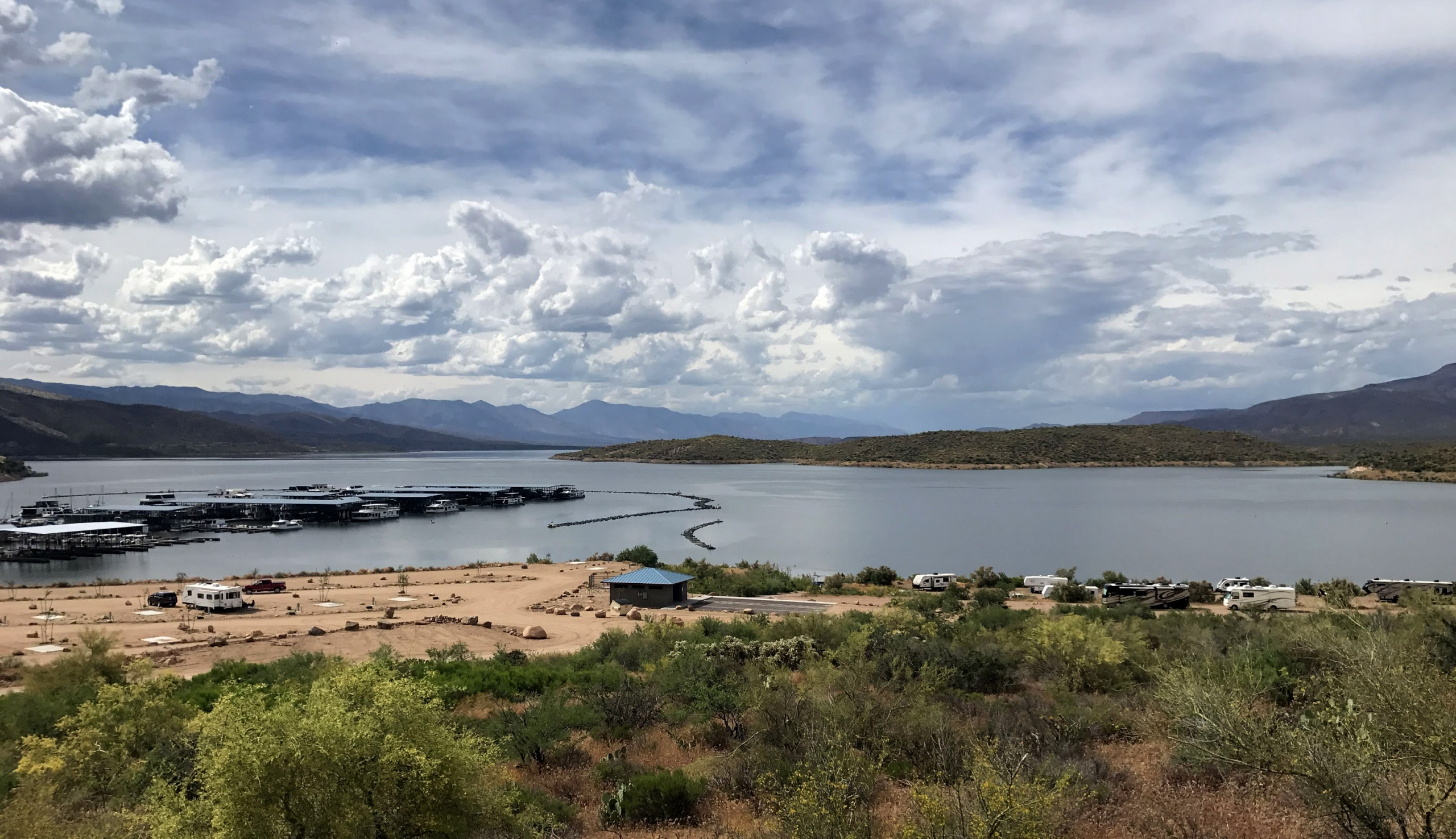The southwestern willow flycatcher is a small perching bird that was federally listed as an endangered species in 1995. These birds breed in densely vegetated riparian areas mostly in Arizona, New Mexico and southern California. They migrate for the winter to the rainforests of Mexico, Central America and Northern South America. Parts of the Verde River have been designated as critical habitat for this species. Last week Tracy and Elaine, from our Habitat Restoration program, attended the Willow Flycatcher survey training at Roosevelt Lake where they learned the proper protocol to survey riparian areas for these birds.

Roosevelt Lake Tonto National Forest Visitor Center deck view
The southwestern willow flycatcher is most easily identified by their song. The identifying vocalization is a “fitz-bew” sound. This is the only way to confidently conclude that you are observing a southwestern willow flycatcher. According to the US Fish and Wildlife Service “it has a grayish-green back and and wings, whitish throat, light gray-olive breast, and pale yellowish belly. Two wingbars are visible and the eye ring is faint or absent. The upper beak is darker than the lower beak.” The major threat to the southwestern willow flycatcher is loss and modification of habitat. Human actions are causing a decline in southwestern riparian areas and the southwestern willow flycatcher’s decline is a result of these actions. These threats include dams, stream channelization, agriculture, development, overgrazing and fire. Since SWFL prefer to build their nest in dense riparian habitat, these actions can typically result in a loss of suitable nesting habitat..

Southwestern Willow Flycatcher – Photo USFWS
Many people may wonder why one little song bird is important to the river. Each species within an ecosystem plays an important role in healthy ecosystem function. For example, according to US Fish and Wildlife Service, studies have shown that southwestern willow flycatcher’s diet of insects contributes to the health of riparian trees and forests. Insectivores like the willow flycatcher eat copious amounts of insects per day, these include mosquitos and other pest insects. Without these birds, the insect population would likely increase and forest health could be negatively impacted. The listing of the southwestern willow flycatcher, other endangered species and the growing monocultures of invasive species along southwestern rivers are just a few of the symptoms of a larger problem. The threats to southwestern willow flycatchers listed above are great threats to the southwestern riparian areas in general. Human disturbance of riparian areas is becoming more common as water resources become more and more scarce in the southwest. Sustainable water management and water conservation are important now more than ever and we need to be concerned with water quantity and also where that quantity of water is stored and what kind of habitat surrounds it. A river in the southwest is a desert oasis where so many diverse species of plants and animals exist and work together. We need to step up and do our work to protect and rehabilitate the rivers we cherish so much.

A note about bird calls: When you are walking in the woods it is always a fun time to listen and look for birds but please refrain from using apps or recordings of birds to call them. This is harassment and it threatens the bird’s livelihood. When you pull a bird towards you and away from it’s nest or perch it can become vulnerable to predators or other things that put its life at risk. We camped at Roosevelt lake since bird surveys should start around 6 AM since that’s when the birds sing the most. Elaine came prepared with a mosquito net in case the birds weren’t taking care of enough of the mosquitos. By Elaine Nichols


 A note about bird calls: When you are walking in the woods it is always a fun time to listen and look for birds but please refrain from using apps or recordings of birds to call them. This is harassment and it threatens the bird’s livelihood. When you pull a bird towards you and away from it’s nest or perch it can become vulnerable to predators or other things that put its life at risk. We camped at Roosevelt lake since bird surveys should start around 6 AM since that’s when the birds sing the most. Elaine came prepared with a mosquito net in case the birds weren’t taking care of enough of the mosquitos. By Elaine Nichols
A note about bird calls: When you are walking in the woods it is always a fun time to listen and look for birds but please refrain from using apps or recordings of birds to call them. This is harassment and it threatens the bird’s livelihood. When you pull a bird towards you and away from it’s nest or perch it can become vulnerable to predators or other things that put its life at risk. We camped at Roosevelt lake since bird surveys should start around 6 AM since that’s when the birds sing the most. Elaine came prepared with a mosquito net in case the birds weren’t taking care of enough of the mosquitos. By Elaine Nichols






